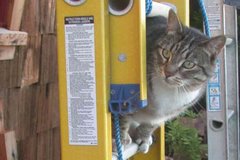Planned First Core Site
2016.11.10
- We are moments from leaving the dock. I have put together a map that shows our proposed cores overlain on 250 meter resolution bathymetry data. We will be collecting piston cores (PC) at these sites, with lengths upwards of 5 meters.
- We had our first shipboard meeting at 8 AM this morning. There are 14 scientists aboard. All, but myself, are from New Zealand. Most are from NIWA. There are 4 students aboard, along with one post doc. My shipboard colleagues are providing empathy for me given the recent electoral returns back in the states. Needless to say, there is much being discussed in social media about this. I will focus on the science while aboard the R/V Tangaroa. This is a fine ship with highly competent engineers and other crew.
- Core priority is designated by color (high priority aka "must haves" = red or orange and low priority = green or blue). Our plan is to head northwards along the margin and collect cores in the very high and high priority sites. Once we get to the northernmost region of our planned survey area, we will evaluate what to do next based upon what we have observed to date. We will consider collecting additional cores in our high priority sites if those existing cores were of poor quality or possibly poorly located. We will consider collecting additional cores in med to low priority sites if the spatial coverage will be optimal for our analyses. We will also consider sites to collect multi-core cores (MC).
- MC cores are useful to collect the sediment water interface. PC cores often blow away the surface sediment when the core initially approaches and penetrates the seafloor. Having the sediment/water interface is useful for us to develop a sediment accumulation rate using 210Pb isotopic measurements. Also, the possibility of finding the most recent event will be optimized in the uppermost sediment, most likely to be in a MC.



No comments:
Post a Comment